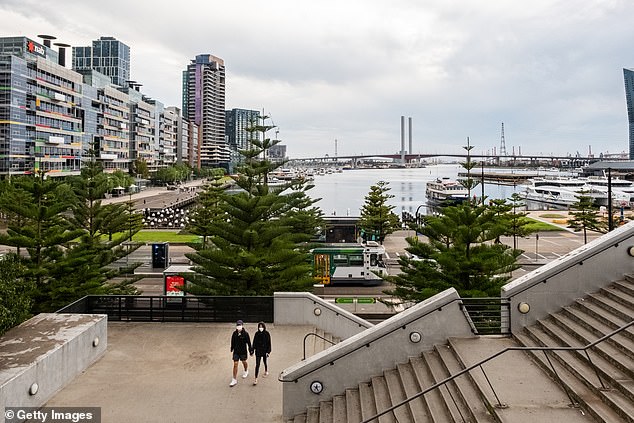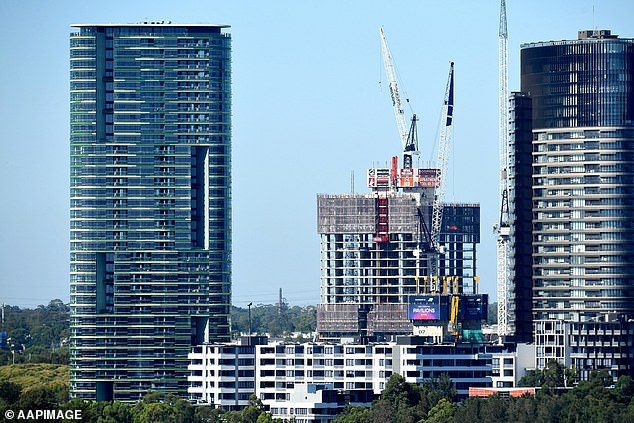Apartments are selling at a loss in Australia’s two largest cities, even during a housing affordability crisis, new data shows.
Record immigration has driven up house prices, but already overcrowded Sydney and Melbourne are selling more urban units than anywhere else.
An ultra-tight rental market and a double-digit increase in rents over the past year are also no guarantee that units will increase in value, especially if they are in a high-rise tower.
Melbourne
In central Melbourne, 40.7 per cent of homes were sold at a loss during the December quarter, or 6.8 times the national average loss rate of 6 per cent, CoreLogic data showed.

In central Melbourne, 40.7 per cent of homes were sold at a loss during the December quarter – or 6.8 times the national average loss rate of 6 per cent, CoreLogic data showed (on photo, the Docklands area near the city) – and 98 percent 100% of the loss sales were units
It noted that 98 per cent of loss-making sales were units, even though sellers in the Melbourne City Council area had held onto their homes for an average of nine years and eight months.
Losses are more likely to occur in areas where apartments were built during the 2010s, when interest rates were lower and construction activity was much stronger.
This has led to an oversupply of apartments in some areas and, in some cases, quality problems.
“Unit supply was particularly high in the mid-to-late 2010s, driven by a high concentration of investor participation in the real estate market and the structural decline in interest rates,” CoreLogic said.
In inner-city Melbourne, the median unit price is $473,483, or 28.2 per cent less than Melbourne’s median unit price of $607,473.
Despite the tight rental vacancy rate, North Melbourne unit prices fell 0.3 per cent over the past year to $505,702.
Apartments are even cheaper in Flemington, with a median unit price of $410,528.
But in Docklands, they’re a little more expensive: $592,863, which would still be affordable for a median-income worker on $98,218.
In the neighboring Port Phillip Council area, 21.3 per cent of homes were sold at a loss, and this densely populated area covers St Kilda Bay, where the average unit price is $530,584.


The Parramatta council area had 22.4 per cent of homes sold at a loss, including Sydney Olympic Park, home to dilapidated apartment towers, where values fell 1.2 per cent over the year (pictured, the problematic Opal Tower).
In Windsor, the median unit price fell 6.2 per cent over the past year to $512,633.
Next door, in the Stonnington council area, 27 per cent of houses were sold at a loss.
This covers South Yarra, a suburb with a median unit price of $579,182, following a 4.2 per cent drop over the last year.
In luxury Toorak, the median apartment price fell 3.4 per cent over the year to $1.033 million.
Sydney
In some Sydney council areas, one in five homes is sold at a loss.
The Parramatta area had 22.4 per cent of homes selling for less than the seller had paid.
This included Sydney Olympic Park, home to spectacular apartment towers such as the troubled Opal development, whose values fell 1.2 per cent over the year to $731,841.
But this is still below the median Sydney apartment price of $837,253.
The nearby Strathfield council area had a loss rate of 23.8 per cent, compared to 23.2 per cent in neighboring Burwood.
Darwin
Only Darwin had a higher loss rate of 51.4 per cent for units across the city.
In Bayview, the median apartment price fell 2.8 per cent to $531,388 over the past year, which is well above Darwin’s ultra-affordable median price of $367,951.

